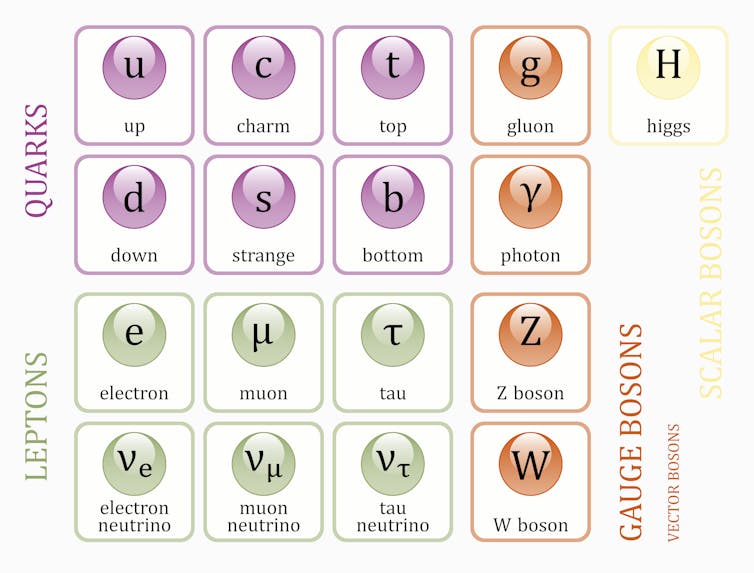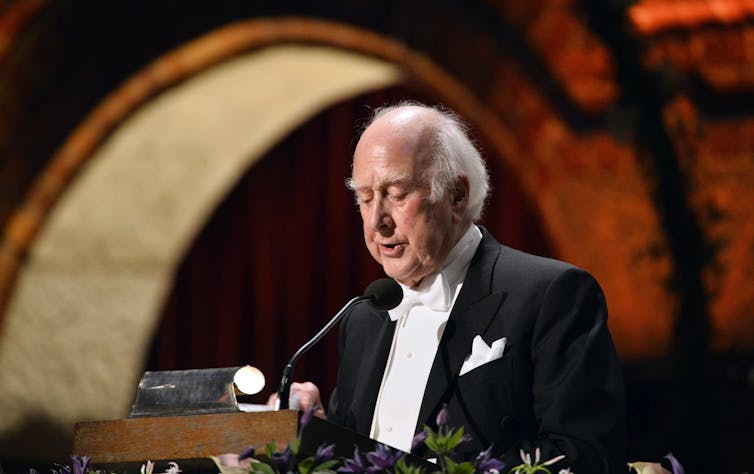Particle physics giant Peter Wade Higgs died at his home in Edinburgh on April 8, 2024, at the age of 94. His unparalleled legacy, epitomized by the discovery of the Higgs boson, continues to profoundly shape the future of particle physics as never before. This is the story of his legacy.
When Higgs was born in 1929, our understanding of matter was completely different. Physicists developed a simple model of matter containing three fundamental particles (which cannot be broken down into smaller particles).
These are protons, found in the nucleus of atoms, electrons, surrounding protons, and photons, packets of light responsible for the natural force called electromagnetism.
During Higgs’s lifetime, a stunning revolution would unfold, culminating in the creation of the Standard Model of particle physics, the most successful framework in history for understanding the building blocks of the universe.
The Higgs boson would provide the core of this theory. To understand the significance of Higgs’ work, it is necessary to understand the conundrum nature has posed for physicists since the discovery of the neutron in 1932.
The neutron is a subatomic particle that is the neutral partner of the proton, but is slightly heavier. If a neutron escapes from the nucleus, it decays into protons and electrons in about ten minutes.
Explaining this decay requires a new force and particle to mediate it (called a force carrier). The new force carrier would have to be many times heavier than neutrons and protons, something that popular theories cannot explain.
According to this theory, the force carrier must be massless. This is the case with photons, the force carriers of the electromagnetic force. Physicists call this feature of the theory a symmetry.
In physics, the more symmetric a theory is, the fewer free parameters it has, and the fewer parts of the theory that can be changed. Additional parameters, such as the mass of the force carrier, can make the theory inconsistent.
Physicists knew that certain particles had mass but could not explain it. They needed to find the right way to break or overcome the symmetries in the theory, giving the particles mass in a way that was compatible with known laws of nature. When Higgs began working on his ideas in the 1960s, the question of how elementary particles acquire mass was a central question in physics.
Henrik Montgomery/Shutterstock
In the early 1960s, American physicist Phil Anderson noticed that the symmetry problems in the theory could be overcome in a superconductor (a material that conducts electricity with zero resistance) or in a charged gas called a plasma. However, for theories that explain quality, feasible solutions cannot rely on specific media or materials.
Later, Higgs and other theorists developed a model to overcome this difficulty. The other physicists were Gerald Guralnik, Carl Hagen, Tom Keble, Robert Brault and Francois Englert. Englert later shared the 2013 Nobel Prize in Physics with Higgs.
In retrospect, the idea is simple: the background field permeates the entire space, creating the medium within which Anderson’s ideas work. Higgs published his first paper on the subject in 1964. If discovered, it would prove that the Standard Model is a consistent theory of nature.
However, finding the Higgs boson is extremely challenging. Higgs himself did not think the problem would be solved in his lifetime. It took nearly 50 years and the largest experiment in history, CERN’s Large Hadron Collider (LHC), to finally discover the Higgs boson. On July 4, 2012, Higgs’s photo spread around the world, and people were moved to tears by the news.

Alionaprof/Shutterstock
Our universe is fundamentally shaped by the unique properties of the Higgs boson. Similar to the solid, liquid and gaseous states of matter, the Higgs field corresponds to a phase of the universe and can be determined by measuring how the Higgs boson interacts with other particles.
The Large Hadron Collider has observed many of these interactions in the decade since its discovery. These results raise new questions. The stability of the universe and its ability to maintain its current state more or less forever appears to depend on the mass and interactions of the Higgs boson.
If current measurements of this particle are correct, the universe is not stable in its current state. This means it may eventually transform into another form. Our answer to this question may prove the Standard Model wrong.
Physicists also want to answer whether the Higgs field can actually explain the masses of all elementary particles predicted by the Standard Model. For many of the Higgs bosons produced by the LHC, we can’t figure out what other particles they decay into. If we could, we could test more speculative theories related to dark matter or theories other than the Standard Model.
To answer these questions, Europe, the United States and China have proposed plans to build a new particle collider, focusing on the Higgs boson. Higgs’ legacy will be the experimental particle physics program of the 21st century.
Higgs was a physicist from a different era. It is now unthinkable for someone with his published papers to persist in academia. He published only a few papers, almost all of which he wrote alone. Today’s academic culture creates intense competition and frequent pressure to publish.
Higgs admitted as much in a 2013 interview: It’s hard to imagine how I could have had enough peace and quiet in the current circumstances to do what I did in 1964. I wouldn’t find an academic job today. Work I don’t think I would be considered productive enough.
This should be considered a warning. Breakthroughs take time to read and study work in other fields, such as Higgs taking the time to understand Anderson’s work. They require universities to create environments that prioritize research time, rather than placing researchers in the precarious position of being dependent on the constant pursuit of grant funding.
If Peter Higgs’s legacy changed our understanding of particle physics and how we do it, that would be entirely fitting.
#Peter #Higgs #famous #particle #discovery #lies #heart #strategy #unlock #secrets #universe
Image Source : theconversation.com
